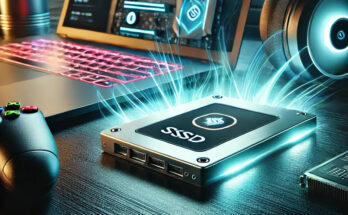Troubleshooting internet connection issues can be frustrating, but there are quick solutions available. Methodical steps can solve underlying issues, but quick fixes can provide a speedy solution. Start with the top five quick fixes and explore more comprehensive troubleshooting if needed.
Top 5 quick fixes for internet issues:
1. Restart your modem and router.
This is the golden rule of internet troubleshooting. A simple restart can often clear up temporary glitches and conflicts.
2. Check your wires and cables.
Loose or damaged cables can prevent a proper connection. Make sure all the cables are securely plugged in, and check for any visible damage.
3. Move your router to a better spot.
The location of your router can significantly impact your Wi-Fi signal strength. Avoid placing it in corners, behind furniture, or near other electronic devices that can cause interference.
4. Test a different website or online activity.
Sometimes, the issue might not be with your internet connection but with a specific website or service. Try accessing a different website or using a different online application to see if the problem persists.
5. Check for an outage.
Your internet service provider (ISP) might be experiencing an outage in your area. You can check their website or social media pages for updates, or use a website like Downdetector to see if other users in your area are reporting problems.
Internet signal or Wi-Fi problem
Are you grappling with internet signal or Wi-Fi issues? Distinguishing between the two is crucial as they require different troubleshooting approaches. Internet signal problems typically stem from issues with your ISP’s signal, modem malfunctions, or wiring glitches in your home. On the other hand, Wi-Fi issues involve disruptions to your router’s wireless signal, like interference from obstacles, excessive distance between devices, or conflicts with other networks and electronic devices.
To identify whether you’re dealing with an internet signal or Wi-Fi issue, follow these troubleshooting steps:
1. Check the Lights on Your Equipment:
Most modems, routers, and internet gateways feature LED status lights. These lights, or a single LED, indicate various statuses. Consult your ISP’s guide if you’re using rental equipment, or refer to the manual for your personally-owned devices. Observing the behavior and color of these lights can swiftly reveal network problems.
2. Inspect the Internet Signal Light:
Look for the internet connection light on your modem, usually labeled as WAN, Internet, or with a globe icon. A solid white or green light signifies a functional internet connection. However, if the light is red or off, it indicates an internet signal problem, requiring troubleshooting in that area.
3. Examine the Wi-Fi Light:
Wi-Fi lights, located on your router or below the internet connection light in modem/router combo units, indicate the status of your wireless signal. These lights, often labeled as “2.4G” and “5G,” “WLAN,” or “Wireless,” should be on and blinking. If they’re off or red, your router isn’t broadcasting a signal, necessitating Wi-Fi troubleshooting.
If the equipment lights don’t shed light on your internet issue, proceed with the following steps:
Pro Tip: A quick fix for many internet issues is to restart your modem and router. Simply unplug the power cable for 10 seconds and then plug it back in. Allow a few minutes for the equipment to reboot.
4. Try Using an Ethernet Cable for Testing:
If you’re on Wi-Fi, connect your computer directly to the router using an Ethernet cable. This method helps differentiate between signal and Wi-Fi issues. If internet connectivity is restored via the wired connection, the problem lies with Wi-Fi. Continue troubleshooting accordingly. If not, explore further troubleshooting steps.
5. Check for Internet Outages:
It’s possible that your internet service is experiencing an outage. Websites like Down Detector can provide outage information, or you can contact your ISP for assistance.
Wi-Fi connected but no internet?
1. Restart your devices:
This simple step often works wonders. Turn off and unplug your router and modem for about 30 seconds, then plug them back in and wait for them to restart completely. Additionally, restart the device you’re using to connect to Wi-Fi (e.g., laptop, phone).
2. Check your Wi-Fi settings:
Make sure Wi-Fi is enabled on your device and that you’re connecting to the correct network.
3. Forget and re-add the network:
This can help if your device is having trouble remembering the network credentials. Go to your Wi-Fi settings, select the network you’re having trouble with, and choose the option to forget the network. Then, try reconnecting to it by entering the password again.
4. Check for interference:
Wireless signals can be affected by interference from other electronic devices, such as cordless phones, microwaves, and baby monitors. Try moving your router away from these devices and see if it improves your connection.
5. Update your device drivers:
Outdated drivers can sometimes cause connection problems. Check your device manufacturer’s website for any available driver updates for your network adapter.
6. Change the Wi-Fi channel:
If your neighborhood is crowded with Wi-Fi networks, your current channel might be congested. Try logging in to your router’s admin panel (refer to the router’s manual for instructions) and changing the channel to a less congested one.
7. Contact your internet service provider (ISP):
If none of these steps help, the problem might be with your internet service itself. Contact your ISP to see if there are any outages in your area or if they can offer further assistance.




